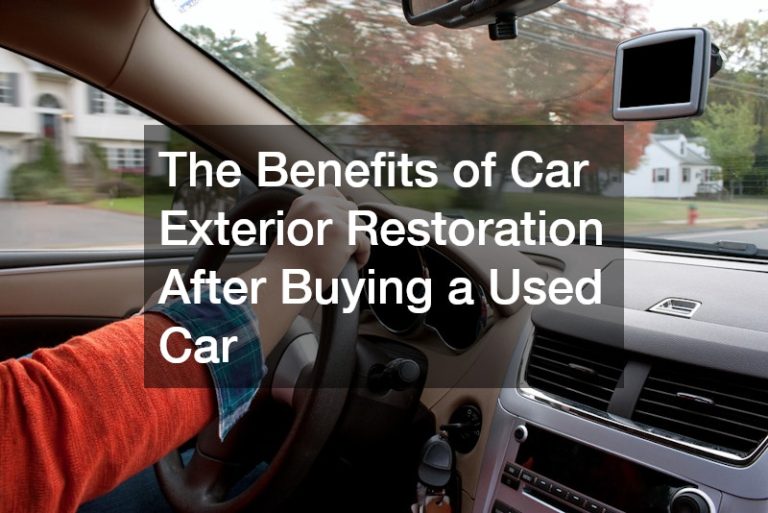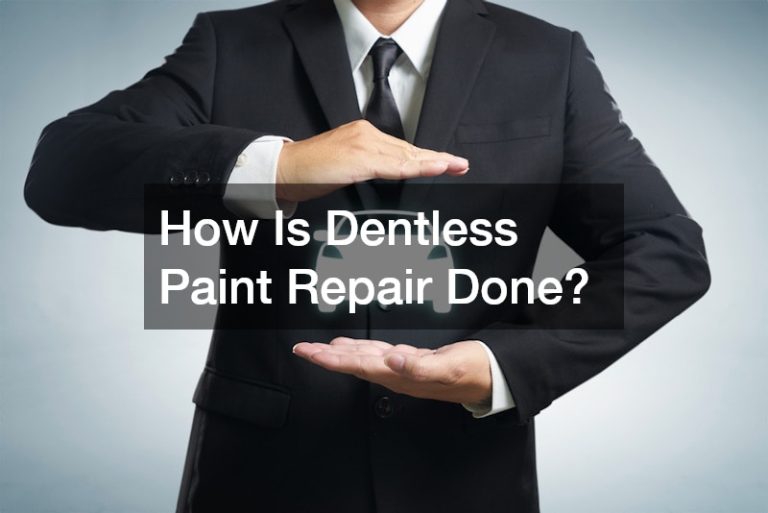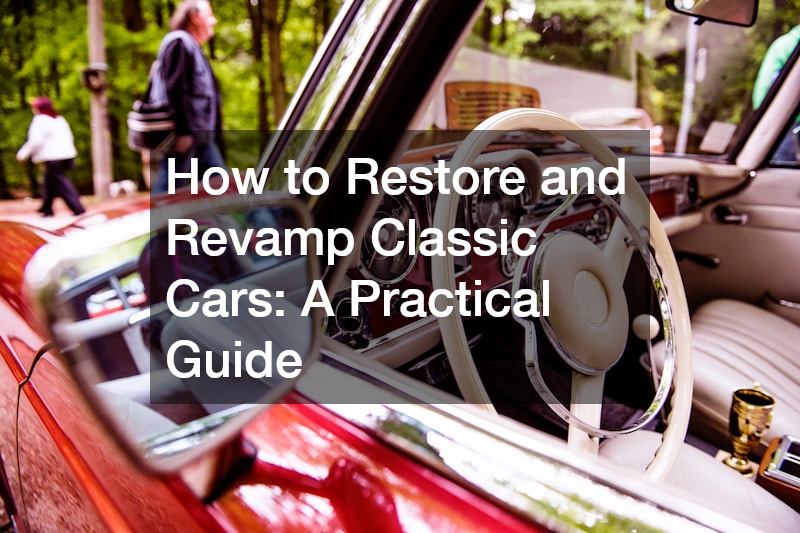
Older cars have a certain appeal, whether it’s nostalgia or the thrill of restoring an old classic. Or, maybe you just enjoy the satisfaction of giving something that has been around the block several times a new lease on life. It can be rewarding to restore an older car, especially if it’s a vehicle you love. It can be a difficult task that requires patience, a good budget and knowledge.
This guide is for those who are considering restoring or revamping an older vehicle. It will cover the most important considerations for working with older cars, including evaluating the overall condition and choosing the best team of professionals to assist you with specialised tasks. You will learn how to upgrade your vehicle both mechanically and cosmetically so that it looks great and runs efficiently.
Each older car has its own story to tell. A comprehensive plan, realistic goals, and a desire to transform your old car into a showpiece or reliable daily driver will help you achieve what you are looking for.
We’ll guide you through the restoration steps. Below, we offer insights and tips that will help you along your way. You can enjoy the benefits of restoring a vehicle with the right attitude, a solid plan and a willingness to invest in quality work.
Evaluating the Condition of Your Classic Car
To begin any restoration or repair work, assess the general condition of your vehicle. You need to understand the situation before deciding on how much work and upgrade you will do. Begin by doing a thorough inspection. This might include checking for rust, damage to the body, issues with frame integrity, and wear on the interior. You can create a list to prioritise the areas that need attention based on cost, safety and personal preferences.
You may want to hire a professional for an inspection, even if you are familiar with cars. A mechanic will be able to tell you the health of your engine if diesel truck repairs are needed (if so), and if the transmission needs repair. If you don’t address issues early, such as hidden engine problems or a compromised chassis, they can become costly. With an expert’s advice, you can decide whether restoring the car is financially and practically feasible.
It is important to gather information on the vehicle’s past. If the vehicle has been involved in an accident, it is important to find out the extent of damage and if the structural integrity was compromised. If you can find them, check out the maintenance records. You can tell how well the car has been maintained by knowing how often it received an oil change and whether or not significant parts were replaced.
It’s time to create a comprehensive plan if the condition of the car seems manageable and your budget is in line with the necessary repairs. This plan will detail what parts require immediate attention, what enhancements are optional and how to tackle each phase.
Setting a Realistic Budget and Timeline
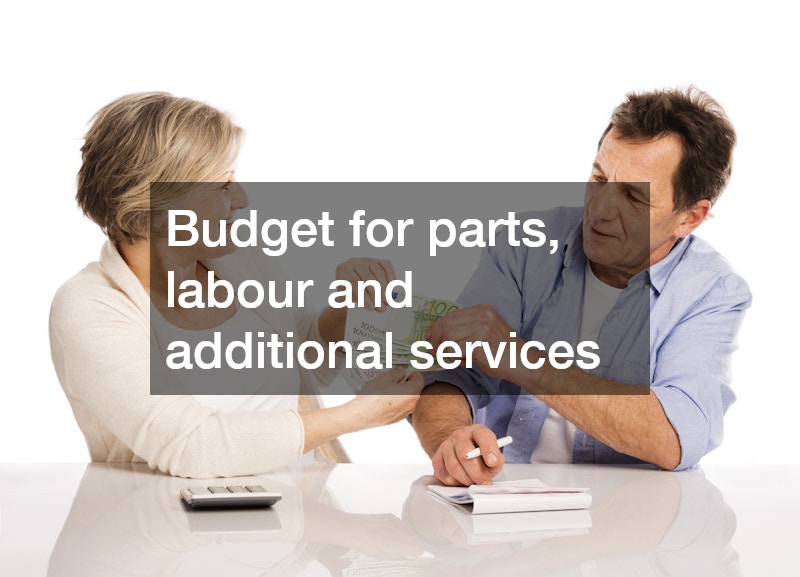
If you are not careful, restoring or repairing an old vehicle can turn into a rabbit hole. Most enthusiasts begin with the idea of doing a few small tweaks to their car but find that it requires more parts and labour than they anticipated. It’s important to set a budget and timeline upfront.
Budget for parts, labour and additional services like auto detailing that will improve the appearance of your car after you have resolved mechanical problems. You should always have a financial cushion in case you discover unexpected problems. You may not realise that you need auto glass replacements unless you examine the tiny cracks in your windshield.
Also, timelines can be unexpectedly extended. There could be a backordered part or a long waiting list for specialised mechanics. Be realistic and factor in any delays. You might be able to be more flexible if the vehicle is a second or recreational car. You’ll have to plan your schedule around the times when you won’t be able to use it.
During this time, you should also check your auto insurance. Some policies restrict coverage on older cars, while others provide special coverage for antique or classic vehicles. It may be necessary to update your insurance policy in order to remain protected during the restoration of the vehicle, especially if the investment will be significant.
Mechanical Upgrades and Ensuring Road Safety
After you have established your plan and budget, it is time to start upgrading the car’s mechanical components. Start with the basics that keep your car on the road. This includes brakes, steering, suspension and other essential engine parts like the timing chain or belt. Diesel truck repairs may be necessary if you have a truck with a diesel engine that requires specific work. Focus on these mechanical aspects, regardless of vehicle type:
- Check brake pads, rotors, and lines. Replace or repair anything that is worn out or has failed immediately.
- Check the alignment, ball joints, tie rods, struts, and shocks. Wearing suspension or steering parts can make driving your vehicle unsafe and uncomfortable.
- Consider replacing spark plugs and belts as well as filters, in addition to the oil change. Fuel system cleaners and possibly new hoses for older engines that are brittle or leaky could also be beneficial.
- Make sure your transmission shifts smoothly and that your driveshaft or joint CV is in good condition. When dealing with a transmission manual, check the wear on the clutch.
- Overheating can be a problem in older vehicles. Check for leaks and deterioration in the water pump, radiator, and coolant hoses.
It’s important to partner with a reliable mechanic if you are not mechanically inclined. A professional who is trustworthy can diagnose problems quickly, source quality components, and do the necessary work in order to keep your car in top driving condition. You’ll be able to make more cosmetic and performance-oriented modifications if you address these safety issues first.
Revamping the Exterior: Body and Paint Work
Many car enthusiasts focus on improving the appearance of their cars after addressing the mechanical issues. Face it: nobody wants to drive an old or neglected car. Exterior work is available in many forms, from minor touch-ups to complete overhauls. If the paint has been severely damaged or is faded, an auto painting may be necessary.
Before you start painting, it’s best to fix any structural problems first, such as dents, rust or collision damage. An auto body service may be required to restore the vehicle’s smoothness and cohesion. You’ll need to hire professionals if you have extensive rust. They can replace the corroded parts and cut them out. Trying to cover rust with new paint can lead to more serious (and expensive) problems in the future.
After the body has been repaired, you can begin painting. If you want to restore your car to its original colour, you can do so. Or, you can choose a modern, fresh hue for a more aesthetic look. Your auto body shop can advise you on the best paint for your car, including single-stage finishes and base coat/clear coating applications with a higher gloss. Detail work is important; a skilled painter will ensure that the finish is durable, with minimal overspray and even coverage.
If you have a limited budget, you can paint sections of your car that are in good shape. Be aware that matching colours can be difficult, especially if factory paint fades over time. You’ll want to protect the investment you made in your paint job with a sealant or wax. This will help maintain a fresh appearance and provide a layer of protection against the elements.
Upgrading the Interior for Comfort and Style
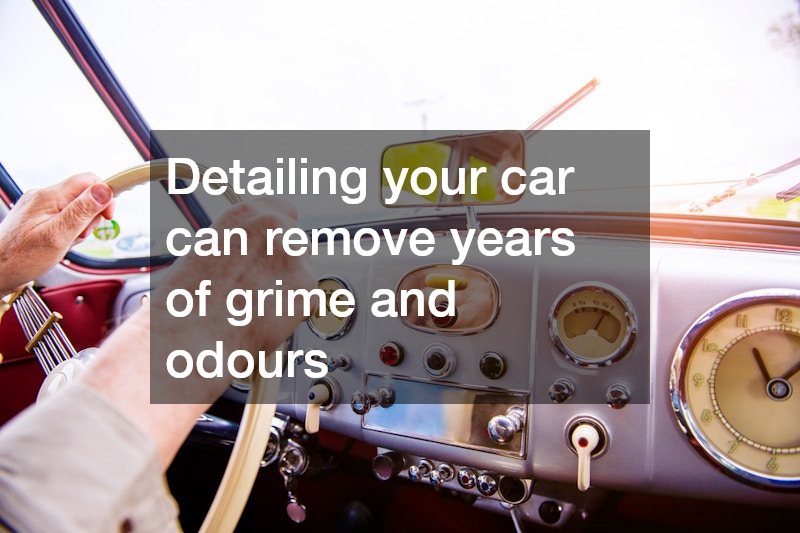
You’re constantly in contact with your interior when you drive or ride in your vehicle. Seats, dashboards, and headliners can all sag over time. Some interior problems are cosmetic, but torn or exposed foam in the seats can be dangerous. If you have worn-out seats, consoles, door panels, or other interior elements in your vehicle, auto repair can rejuvenate them and make your car look new.
Older vehicles often lack features such as advanced audio systems and sound insulation. These features can enhance your driving experience. Upgrading to supportive seats or installing a Bluetooth-enabled aftermarket stereo can improve daily commutes. If you want to restore the car to the concourse level, you might want to keep as much originality as possible. Modern upgrades are a great choice if you want to have a comfortable car.
Do not overlook simple improvements such as cleaning the dashboard and door panels or updating the carpet. Detailing your car can remove years of grime and odours. Detailers can deep-clean the upholstery and carpets and polish the interior trim, giving it a new look. This simple step can transform how you feel about an older vehicle, making it more enjoyable for short and road trips.
Adding Finishing Touches to Windows
Windows are important for both safety and appearance in any vehicle. Older vehicles may have faulty glass, which can reduce visibility and safety. You should replace your auto windshield as soon as you see any chips or cracks. This can be dangerous, as the damage will worsen if you delay, especially during extreme temperatures. The replacement of your windshield will not only improve the quality of your vision but also help maintain the structural integrity and strength of the front section of the vehicle.
You may want to repair or replace the manual windows on your car or any older power window systems that are not working properly. Old window seals may also allow for water leaks or cause wind noises, particularly at highway speeds. The interior of the cabin can be protected from moisture damage and improved by replacing worn weather strips.
After you have resolved the issues with the glass and seals, you can add some finishing touches, such as polishing your headlights or taillights. Older cars often have cloudy lenses, but they can be restored relatively cheaply and improve visibility at night. If you want a high-quality finish, have the exterior of your car detailed or apply paint protection film in areas that are likely to be damaged. These steps will help you maintain the new look that you have worked so hard to achieve.
Maintaining Your Restored Classic Car
After spending time, money, and effort to restore an older car, it’s important to maintain it so that it remains in top condition. Regular maintenance, like changing the oil in your car at regular intervals is crucial to engine longevity. Watch fluid levels, tyre inflation, and unusual noises that could indicate mechanical problems.
Consider investing in a battery tender if your car is left parked for long periods. This will keep the battery healthy and charged. By periodically starting your vehicle and driving it, you can keep the seals lubricated. This will also prevent fluids from becoming stagnant. Be aware of your driving conditions. You can prevent rust if you live in an area that is humid or salted. More frequent washings and inspections of the underbody will help. Inspections at a reputable auto body shop can help you catch minor dents or rust before they become worse.
You should also review your auto insurance policy after you have completed major repairs or upgrades. You’ll need to update your insurance policy if the value of the vehicle has increased. Some insurance companies offer classic car insurance or policies with agreed values that will protect your investment better than standard auto plans. Keep all documentation and photos from the restoration process to help you negotiate with your insurer about coverage options.
Finding the Right Professionals for the Job
While some jobs can be done at home, you should seek professional help when it comes to specialised tasks. When it comes to auto painting or other more complicated mechanical work, having a trained mechanic on your team can save you both time and frustration. Doing your research is essential before choosing an auto body shop or other specialised services. Ask for recommendations and read reviews. Also, talk to staff members to find out if they’ve worked on older vehicles.
Diverse shops have different strengths. Another might be known for its impeccable auto interior repairs, while the first excels at performance engine build. You should aim to put together a team that can meet the unique needs of your vehicle. Ask about labour or parts warranties. Shops that are reputable will often offer a guarantee on their work. This gives you peace of mind if there is a problem after the job has been completed.
You can find reliable service providers by networking with other car enthusiasts, whether you are looking for auto detailing or diesel truck repairs. Online forums, car clubs, and local shows are great resources for tips and advice. Connecting with people who share the same passion will help you gain insight into which professionals and shops deliver the best results.
Celebrating the Completion of Your Restoration Project
It can take a long time to restore or fix an old car, but the reward is great when you see the final result. You’ve preserved a unique piece of automotive heritage, whether you chose to restore the car as close as possible to its original condition or you’ve chosen modern upgrades. It’s a great feeling to take your newly restored vehicle for a drive, turn heads and enjoy the fruits of all your hard work.
Sharing your car is also rewarding. You can connect with other enthusiasts by attending car shows, road trips, or meetups. You may discover new ideas for improving your vehicle or share your expertise with someone who is looking to restore an older car. The car community can be a close-knit one, and friendships formed in this group may last as long as the restored car itself if they don’t even last longer.
You’ll also continue to learn as you maintain and drive your older vehicle. Every oil change, every tune-up and cosmetic refreshment is an opportunity for you to gain a deeper understanding of automotive design and systems. The skills you acquire over time can help you tackle future projects more confidently or assist those who are just starting out.
It is exciting and challenging to embark on a restoration or revitalisation project for an older vehicle. There will be frustrations, such as waiting for rare parts or dealing with hidden rust. You may also have to adjust your budget due to unexpected repairs. You can turn a worn-out vehicle into an attractive and reliable ride by following a plan, investing in quality work and working with professionals who know the nuances of older vehicles.
The real magic is transforming an old vehicle from a piece of junk into a reliable road companion. It’s a great way to show your passion and dedication. After your project is completed, each mile you drive will be a celebration of the progress you have made with your restored vehicle. Safe travels!
